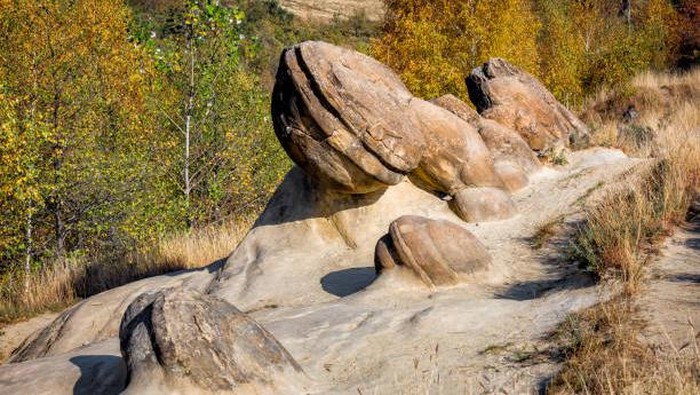In Romania, there exists a group of stones considered as "living" rocks that can "give birth." This group of stones is known as the Trovants of Romania. Explore the origin and intriguing facts surrounding Trovants that have piqued the curiosity of scientists below.

Intriguing Facts about Trovants, the "Living" and "Birthing" Stones
Here's a series of fascinating facts about the Trovants of Romania, dubbed as living and birthing stones:
1. A Geological Marvel
According to Dailymail, the "living" rocks in Romania actually originate from the Earth, formed naturally through geological processes. The Trovants of Romania represent a geological phenomenon found in the small village of Costesti, Romania, approximately 80 km west of the capital, Bucharest.
According to Geologyin, Trovants consist of a stone core with an outer layer resembling sand. Allegedly, after heavy rainfall, small shapes emerge on these rocks, earning them the nickname "birthing stones" or "growing stones" by the locals.
Trovants are estimated to be up to six million years old. Interestingly, when Trovants are cut, they exhibit concentric rings resembling tree trunks.
2. The Shapes of Trovants
Trovants come in various shapes and sizes, ranging from spherical to ellipsoidal, and even resembling mushrooms. Some are several meters in diameter, while others are small enough to fit in the palm of a hand.
Most Trovants consist of a stone core surrounded by a shell of sand, hence the name Trovants, synonymous with the German term "Sandsteinkonkretionen," meaning sandstone concretions.
3. Can Trovants Truly Grow and Move?
Trovants are unique mineral structures that mimic the characteristics of plant and mammal life. These growing rocks are considered identical and even move like rolling stones in valleys.
Trovants are believed to reproduce, originating from gravel and growing approximately two inches per millennium. The rocks grow slowly due to the presence of rainwater.
Minerals in the rainwater react, creating pressure inside the rock, making it appear as though the stones can grow and reproduce.
Research on Trovants of Romania
In reality, scientists still do not fully understand how Trovants are formed. There are numerous hypotheses surrounding the Trovants of Romania, some of which are quite fantastic. cab
According to the International Geological Congress held in Oslo in 2008, Trovants are inaccurately considered sandstone concretions. According to the congress's hypothesis, Trovants represent diagenetic textures indicating paleodynamic (paleoseismic) conditions, corresponding to the specific compaction of sandy sediments with locally accumulated solutions (especially carbonate) in sand.
During significant seismic shocks and under the influence of internal cohesive forces, they tend to form spherical shapes. Gravity, seismic shocks, cohesive forces of solutions, and the adhesive strength between sand grains and fluid are believed to be involved in this process.
"Trovants do not just emerge from the ground; they exist in a collection of sands with different geological ages that reach natural outcrops or sand quarries," said Dr. Mircea Ticleanu of the Romanian Geological Institute, as quoted from Mail Online, Friday (8/3/2024).
As a note, the hypothesis about the seismic origin of Trovants is well supported by many laboratory experiments.
So, scientifically, the growth of Trovant stones in Romania is believed to occur when chemical reactions take place between sediment layers and carbonate minerals in the presence of rainwater. Costeşti is not the only place where Trovant stones are found.
Research jointly written by Dr. Ticleanu also describes their presence throughout the Carpathian region in Romania.
Being referred to as "living rocks" that appear to grow, this site has become a tourist attraction there.
Although not alive in the scientific sense, local residents and tourists often describe them as "living" due to their growth and change over time.
To protect this astonishing geological creation, the "Muzeul Trovantilor" or Trovants Museum was developed in Valcea in 2004 by the authorities and is now protected by the United Nations Educational, Scientific and Cultural Organization (UNESCO).



